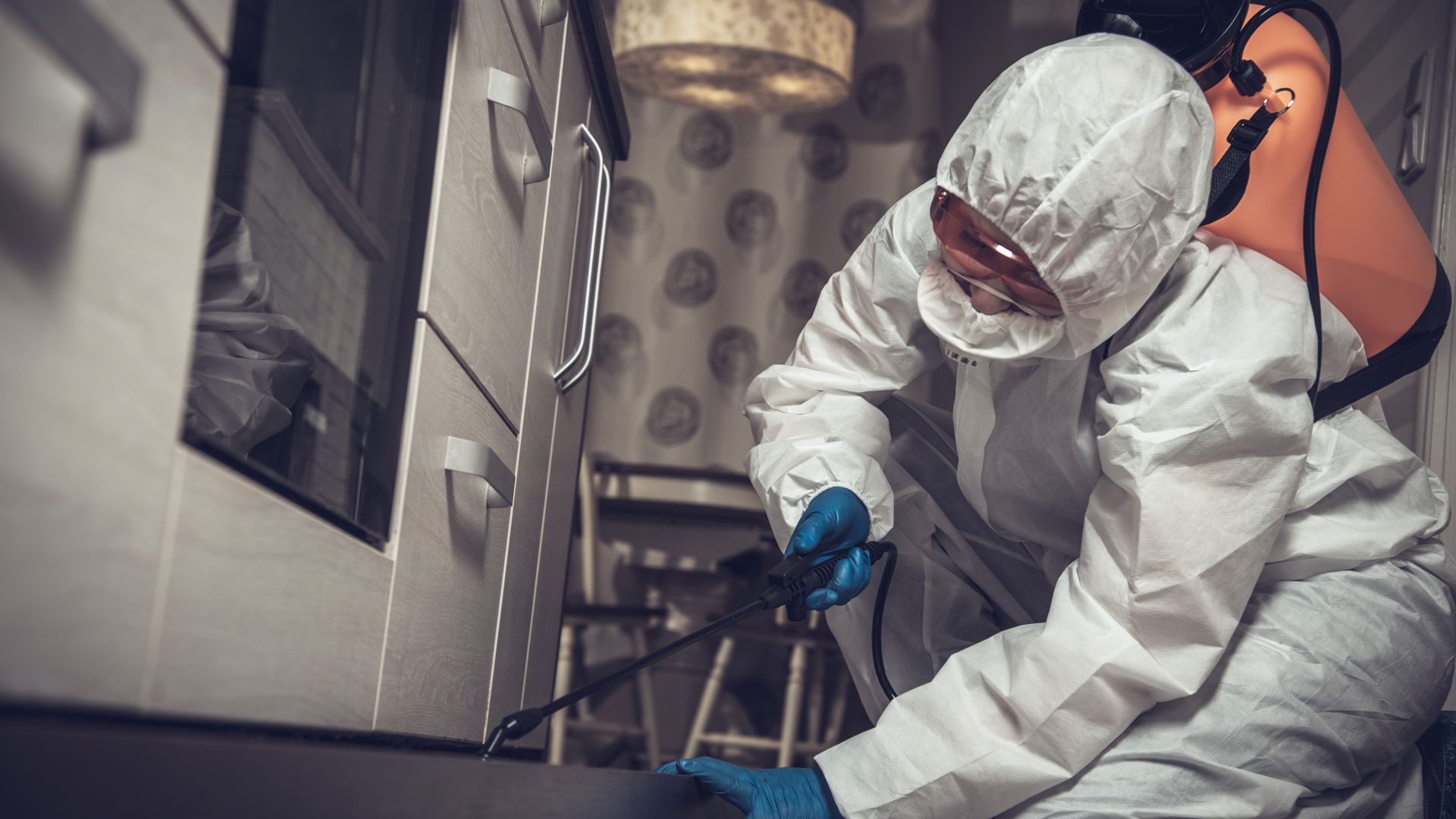
The Key To Effective Termite Control For Your Roseville Property
There are two kinds of termite control. One is restorative. The other is curative. When termites get inside your Roseville property, it is necessary to control and restore your property to a termite-free state. The restoration process will fix some of the damage but will not likely fix all the damage. A better termite control solution is to cure the source of a termite problem. What is the source? It is the ground around your home. That is where subterranean termites live and where active termites are found. You have many options to address termites at the source and cure a termite problem before termites get into your home. Join us today as we look at the challenges of detecting termites and what tricks work to counter these challenges. We'll also give you tips to remove factors that attract termites. Stick with us to the end to learn what to do if you find evidence of termite damage or signs of termites in your yard. If you already know you have a termite problem and are looking for professional termite pest control in Roseville, jump to our contact page and reach out to us for assistance. We're more than happy to help.
You're Likely Never To See A Termite
.2404180957550.jpg)
It isn't easy to detect subterranean termites. Termite workers hide from view and swarmers only appear for a short time. Let's take a look at each of these kinds of termites, discuss what they are, and look at tricks to catch them in the act.
Termite Workers: These are the most abundant termites in a colony, and they are the termites that damage your property. All other termites get their food from the workers, so when considering how to detect termites, you must learn to overcome the challenges of locating workers.
- Worker termites avoid light. They hide from all light, even the light of the moon. You'll never see termite workers crawling around on wood in the day or night unless it is in a sheltered location, such as under a deck or in a crawlspace.
- Worker termites require moisture to stay hydrated. If they come out of hiding at night, they'll only do so in sheltered locations where there is humidity or damp soil. When inspecting your home for damage, you need to look near, or under, the surface of the ground.
- Worker termites don't crunch on the wood of your home. You won't hear them in structural timbers. But if you're lucky, you may hear soldier termites. Soldiers come up into wood tunnels to protect the workers from danger. When a threat is detected, the soldiers bang their heads on tunnel walls, creating a subtle rustling sound. If you know to listen for this sound, you might detect it.
- Worker termites feed on wood in your yard, but they won't do it openly. You can, however, uncover worker termites accidentally. You may pick up a branch and see pale bugs crawling on the bottom. When you see pale bugs, look closely. Worker termites look like fat ants. The reason for the fat appearance is that a termite doesn't have a pinched waist, like the waist of an ant. Termites appear to have two body parts instead of three distinct body parts.
In most cases, you won't see or hear soldier termites, but you can uncover them. When you do, take notice. Doing so can prevent extensive termite damage.
Swarmer Termites: These are reproductive termites that have developed wings. They are also referred to as alates, which just means, "having wings." But a swarmer doesn't always have wings. It emerges from the nest with long white wings but sheds them during the mating process. A swarm lasts less than an hour, so you may never see these winged termites on your property, but if you do, you should know how to identify them.
- A swarmer is black.
- A swarmer is only ⅜ of an inch long, which can seem surprisingly small if all you've ever seen are images of swarmers on the internet.
- The body of a swarmer is much shorter than the wing length.
- The wings of a swarmer cover the thorax and abdomen and hang past the abdomen.
- Swarmer wings are a teardrop shape that is somewhat stretched.
- Swarmer wings stack on top of each other and do not have a cleft at the wing tips. Ant wings have a cleft.
It is hard to detect termites on your property. Therefore, it helps to know other warning signs that termites may provide, such as termite damage. While termite damage isn't a great warning sign (because your property is already damaged), you may not get another sign.


Ensuring your home and business are pest-free, explore our different service areas to see if we're local to you! Give us a call to get started!
Signs Of Termite Damage To Look For Around The House
As we pointed out above, termite workers damage your property, and you must search for the damage because termite workers hide from the light. You can use this information to find damage, but it helps to have a few specific examples of where to look. Here are our best suggestions:
- Do you have wood skirting that touches the ground? Examine the point where the skirting touches the ground. Deterioration in this area is a likely sign of termite activity. Dig the soil to uncover termite workers or soldiers just below the surface.
- Do you have a wood fence? You can excavate soil near the base of your fence posts and look for trenches in the wood. You may also see workers or soldiers in the soil if you inspect your property at night.
- Do you have a crawlspace? You may inspect your crawl space for splintered wood, trenching, or mud tubes attached to surfaces.
- Do you have exposed wood members behind your landscaping? In damp locations where vegetation is dense, termites may find shelter and moisture to openly damage wood members.
- Do you have a stump, log, or dying tree? You may cut into these wood sources and look for tunnels, workers, or soldiers.
It isn't easy to uncover termites or the damage they cause. Therefore, you need to add one more layer of termite protection. It is critical to address conditions that attract termites to your property.
-
Same-Day & Emergency Services AvailableWhen possible, we can provide prompt assistance to help with your pest solution needs.
-
Local, Family Owned & OperatedRooted in our local communities, we know the best solutions for the pests in our unique areas.
-
We Offer Organic Treatment OptionsEmbrace a eco-friendly approach with our range of sustainable solutions for your needs.
-
45+ Years of Industry ExperienceTrust in our seasoned knowledge and proven track record spanning over four decades.
How To Identify And Remove Factors That Attract Termites
There are two reasons why termites will select your property. You already know one of them because we mentioned it. Termites are looking for food. You can prevent termites from actively exploring your yard and stumbling upon the wood in your home if you remove termite food from your yard. The other attractive condition is moisture. We touched on this. Not only can dense landscape vegetation allow worker termites to cause visible damage aboveground, it can also create soil conditions that are favorable for termite activity. Consider these tips for addressing wood sources and moisture:
- Put wooden deck posts on concrete piers.
- Replace wood building materials, such as fencing and skirting, with materials that are resistant to termite damage.
- Pick up dead branches on your property and store them off the ground. We recommend getting a large plastic receptacle for yard waste.
- Store campfire wood on a structure to prevent wood-to-soil contact.
- Replace any rotted wood on your home. Termites often start with rotted wood timbers and move to sound structural timbers.
- Replace wood borders around landscaping and flowerbeds; stone works well.
- Store garbage in receptacles so that these items don't sit on the ground. Termites eat cardboard, paper, and clothing.
- Get your gutters cleaned. A clear and working gutter system helps to prevent the oversaturation of perimeter soil.
Effective termite control begins with effective detection and preventative maintenance. These alone provide curative termite control. When termites enter your yard "like a virus," they won't thrive if they can't find sickness. The sickness is rotting wood, decaying cardboard, damp clothing, moist paperback books, etc.
Contact The Pros At The First Sign Of Termites In Your House
You can contact a professional long before termites enter your yard. You don't have to wait to see termite activity before you get a subterranean termite treatment in Roseville. Proactive termite control is curative. It treats the soil around your home to arrest termite activity and eliminate termite colonies in this key location. However, if you're already seeing termite activity and need restorative termite control, we can help with that as well. At the first sign of termite activity, contact Neighborly Pest Management. We use Termidor and Talstar for industry-leading termite control and termite damage mitigation. These solutions can protect a home before it is even constructed or arrest a termite infestation in a home long after construction. Would you like to learn more or schedule a service visit? We're here to help. Navigate to our contact page and fill out our short form, and we'll have a termite control professional get back to you about your issue.
An ounce of prevention is worth a pound of cure. The experts on staff at Neighborly Pest Management strongly recommend proactive termite control to prevent termite damage long before restoration is needed. Getting curative termite control allows you to address termites before they create secret tunnels in your home that are difficult or impossible to find. Connect with us today to get your protection in place.

Hear From Our Happy Customers
At Neighborly Pest Management, your satisfaction is our priority! See for yourself what our customers have to say about working with us.
-
“We have been using Neighborly Pest for many years. While we have had many competitors come to our door, we have no interest in changing. Doug has been our technician during our entire service, and he is absolutely the best, always friendly!”- Brittany A.
-
“Adam was fantastic! Super friendly and professional. I felt at ease and knew I could ask any question, no matter how dumb it sounded, and he was able to answer and provide more information based on my concerns.”- Erin D.
-
“Nate is an excellent technician. He is a big reason we’re so happy with the service! Overall a great company and fair pricing.”- M.D.
-
“We’ve used Neighborly for a couple of years and have had outstanding service consistently throughout. Doug is mindful of our pets and kid's safety as well, making sure that our home is a safe environment for everyone except the pests!”- Greg
-
“Super friendly and professional. I appreciate the thoughtfulness and professionalism Adam displayed on our initial visit and feel confident he is taking excellent care of my home.”- Erin D.
-
“I've never had a bug problem since I switched to Neighborly. Danny is an awesome technician! He has a great personality and explains things thoroughly and gives me clear and detailed answers to any questions I might have.”- Joe B.





